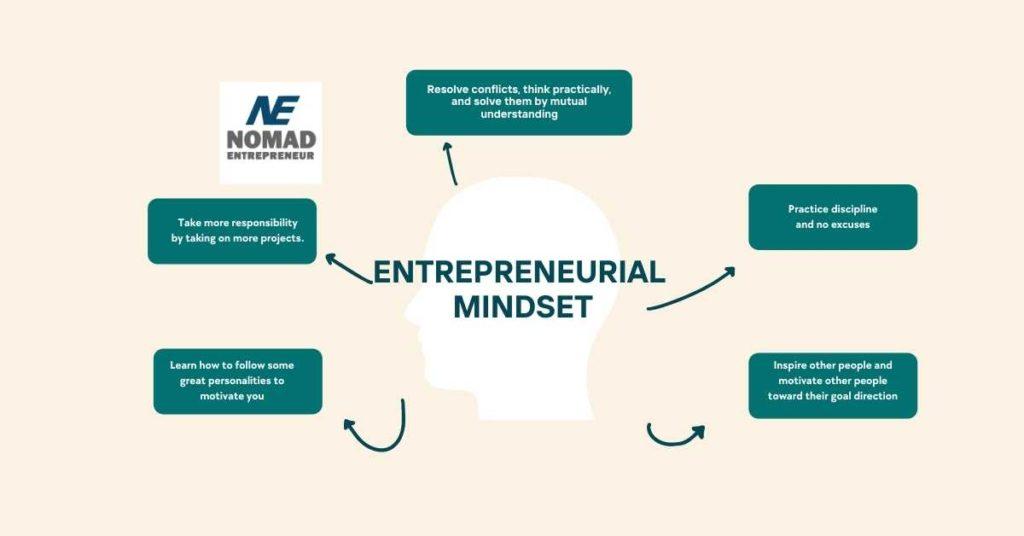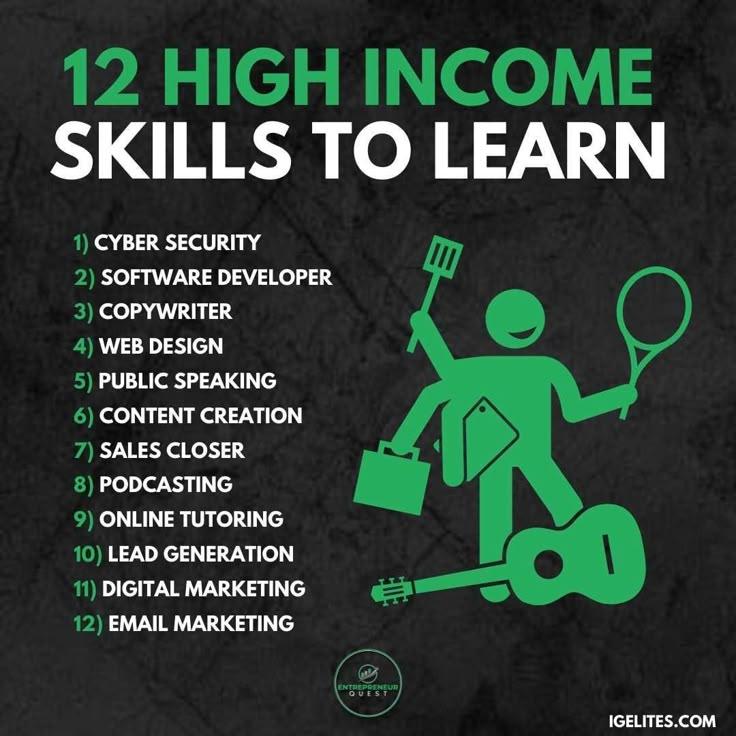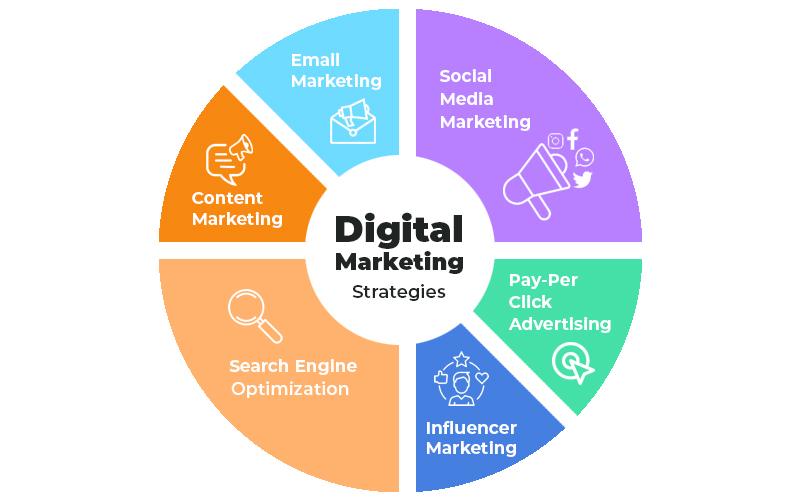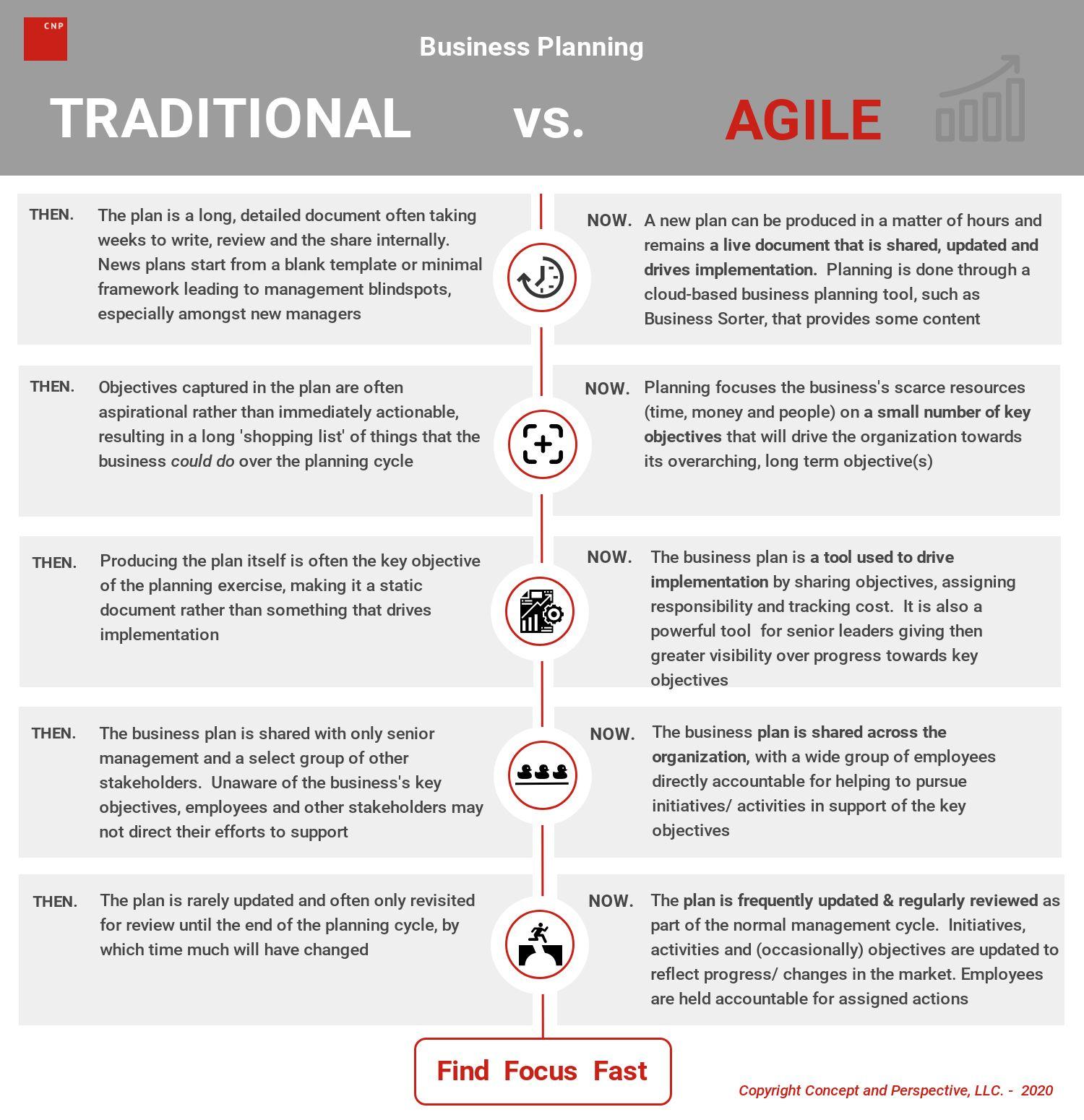
Unlocking Your Entrepreneurial Potential: 17 Proven Ways to Make Money
Hey there, aspiring entrepreneur! Are you ready to turn your ideas into a paycheck? Whether you’re a seasoned business owner or just dipping your toes into the entrepreneurial waters, the quest for profitable opportunities can sometimes feel overwhelming. But don’t worry—you’re not alone! Many have walked this path before you, discovering innovative ways to monetize their passions and skills. In this article, we’ll explore 17 proven strategies to help you make money as an entrepreneur. From leveraging technology to tapping into your community, these methods are not just theoretical; they’re practical, actionable, and ready for you to implement. So, grab a notepad and get ready to transform your entrepreneurial dreams into reality. Your journey to financial success starts right here!
Understanding the Entrepreneurial Mindset for Success
Understanding the entrepreneurial mindset is pivotal for anyone looking to navigate the challenging waters of entrepreneurship. At its core, this mindset is characterized by a unique blend of creativity, resilience, and a proactive approach to problem-solving. Successful entrepreneurs view challenges as opportunities and embrace uncertainty with open arms, knowing that it often leads to innovation and growth.
One of the defining traits of an entrepreneurial mindset is adaptability. The business landscape is ever-evolving, and those who can pivot quickly to meet changing demands often thrive. This adaptability isn’t just about surviving; it’s about thriving in the face of change. Entrepreneurs continually assess their strategies and are willing to shift gears when necessary, which can lead to discovering lucrative avenues for income.
Another critical aspect is self-discipline. While the freedom that comes with being an entrepreneur is appealing, it also requires a strong sense of accountability. Developing a routine and setting clear goals can help keep an entrepreneur focused and motivated. Without a structured approach, it’s easy to get sidetracked or overwhelmed, especially when juggling multiple responsibilities.
Moreover, successful entrepreneurs are relentless learners. They are always seeking knowledge—whether it’s through reading, networking, or taking courses. This thirst for knowledge not only keeps them ahead of trends and technologies but also fuels their creativity. By understanding market needs and consumer behaviors, they can identify new business opportunities that others might overlook.
Equally important is the ability to build and leverage relationships. Networking is not just about making contacts; it’s about creating meaningful connections that can lead to collaboration, mentorship, and potential partnerships. Entrepreneurs who invest time in building their networks often find new avenues for revenue and support that can propel their businesses forward.
To illustrate the traits of an entrepreneurial mindset, let’s take a look at the essential components that contribute to a successful venture:
| Trait | Description |
|---|---|
| Creativity | Generating innovative ideas and solutions. |
| Resilience | Overcoming setbacks and continuing to push forward. |
| Risk Management | Assessing and taking calculated risks. |
| Vision | Having a clear goal and a plan to achieve it. |
| Resourcefulness | Making the most of available resources. |
embracing a mindset of continuous improvement is essential. Recognizing that there’s always room for growth leads entrepreneurs to refine their strategies and enhance their skills. Whether it’s through trial and error or seeking feedback from others, this commitment to improvement can be the difference between stagnation and success.
the entrepreneurial mindset is a dynamic combination of traits and practices that empower individuals to seize opportunities, overcome challenges, and ultimately, achieve financial success. By nurturing these qualities, aspiring entrepreneurs can position themselves for a rewarding journey in the world of business.
Identifying Profitable Niches in Your Market
In the pursuit of entrepreneurial success, pinpointing profitable niches within your market can be the game changer. It’s not just about finding a gap; it’s about discovering an opportunity that aligns with consumer needs and your own passions. Here’s how to navigate this critical aspect of your business strategy.
Start by researching market trends and consumer behavior. Tools like Google Trends, social media insights, and keyword research can reveal what people are actively seeking. Look for
- Emerging trends: Areas that are gaining traction but haven’t yet saturated the market.
- Consumer pain points: Problems people face that lack effective solutions.
- Demographic shifts: Changes in the population that create new demands.
Next, consider your own interests and expertise. Identifying where your passions meet market demand can lead to fulfilling and lucrative business ideas. Reflect on:
- Your hobbies and skills: What do you love doing? How can you monetize it?
- Professional experiences: What unique perspectives can you offer?
- Your network: Who do you know in your industry? Can they provide insights or collaboration opportunities?
Once you have a shortlist of niches, validate your ideas through testing. Create a minimum viable product (MVP) or conduct surveys to gauge interest before fully committing. This step minimizes risk and allows you to refine your offering based on real feedback.
Additionally, analyze your competition. Identify what successful businesses in your chosen niche are doing right and where they might be lacking. Use this information to differentiate yourself. A simple comparison table can be an effective visualization:
| Competitor | Strengths | Weaknesses |
|---|---|---|
| Competitor A | Strong online presence, diverse product range | Poor customer service, high prices |
| Competitor B | Excellent customer reviews, niche focus | Limited marketing efforts |
| Competitor C | Innovative products, strong brand loyalty | Slow to adapt to market changes |
stay adaptable. Markets evolve, and so should your business model. Keep an eye on shifts in consumer preferences and emerging technologies that could open new avenues. Regularly revisit your niche to ensure it remains profitable and relevant.
By combining research, personal insights, and adaptability, you can confidently identify and capitalize on profitable niches in your market, setting the stage for lasting entrepreneurial success.

Leveraging Your Skills and Passions for Income
Turning your skills and passions into a source of income is both an empowering and rewarding endeavor. When you engage in work that you love, it often doesn’t feel like work at all. Here are some ideas to help you monetize your unique talents and interests.
- Freelancing: If you possess skills in writing, graphic design, web development, or marketing, consider freelancing. Platforms like Upwork and Fiverr connect freelancers with clients seeking specific projects.
- Online Courses: Have a skill to share? Create an online course through platforms like Udemy or Teachable. This allows you to reach a global audience while generating passive income.
- Consulting: Use your expertise to offer consulting services. Whether it’s business strategy, health advice, or personal finance, companies and individuals are willing to pay for valuable insights.
- Blogging or Vlogging: If you’re passionate about a topic, start a blog or YouTube channel. With commitment and creativity, you can monetize your content through ads, sponsorships, and affiliate marketing.
- Handmade Products: Are you crafty? Platforms like Etsy allow you to sell handmade goods. Turn your hobbies, like knitting or woodworking, into a profitable side business.
Another effective way to leverage your skills is through networking. Building relationships with like-minded individuals can lead to collaborations or new opportunities. Attend industry events, participate in online forums, and engage with others on social media to broaden your professional circle.
Consider creating a personal brand around your skills and passions. Use social media to showcase your work, share your journey, and connect with your audience. A strong online presence can attract customers and clients who resonate with your mission.
| Skill/Passion | Potential Income Stream |
|---|---|
| Cooking | Meal Prep Services |
| Fitness | Personal Training |
| Photography | Stock Photos |
| Music | Online Lessons |
| Art | Prints and Commissions |
Lastly, don’t underestimate the power of passive income. This can be achieved through rental properties, investments, or creating digital products. By setting up streams of income that don’t require constant effort, you can enjoy the fruits of your labor while exploring other passions.
Building a Strong Personal Brand to Attract Clients
In a competitive market, having a strong personal brand can be your secret weapon. It’s more than just a logo or a catchy tagline; it’s about creating a memorable identity that resonates with your target audience. When you establish a clear and authentic personal brand, you not only attract clients but also foster trust and loyalty.
Here are some key elements to consider as you develop your personal brand:
- Define Your Niche: Understand who your ideal clients are and what problems you can solve for them. Tailor your messaging to address their specific needs.
- Be Authentic: Authenticity is crucial. Share your story, values, and what makes you unique. People connect with real experiences.
- Create Valuable Content: Share insights, tips, and resources through blogs, videos, or social media. Valuable content positions you as an expert in your field.
- Engage with Your Audience: Build relationships by responding to comments, asking questions, and encouraging feedback. Engagement fosters community and loyalty.
- Maintain Consistency: Whether it’s your visual identity or messaging, consistency across all platforms reinforces your brand and builds recognition.
Additionally, consider the following strategies to elevate your personal brand:
| Strategy | Description |
|---|---|
| Networking | Attend industry events and connect with other professionals to expand your influence. |
| Public Speaking | Share your knowledge at workshops or conferences to showcase your expertise. |
| Social Proof | Collect testimonials and case studies from satisfied clients to build credibility. |
| Collaborations | Partner with other brands or influencers to reach a wider audience. |
By focusing on these elements and strategies, you can effectively build a personal brand that not only attracts clients but also sets you apart in your industry. Remember, your personal brand is a reflection of who you are and what you stand for. Invest the time and effort to nurture it, and watch as it transforms your entrepreneurial journey.

Creating Multiple Income Streams for Financial Stability
In today’s fast-paced financial landscape, relying on a single source of income can be risky. Entrepreneurs are increasingly recognizing the importance of diversifying their income streams to ensure greater financial stability. By exploring various avenues for generating revenue, you can create a safety net that protects you from unforeseen circumstances and economic fluctuations.
Consider the following methods to cultivate additional income streams:
- Freelancing: Utilize your skills in writing, graphic design, or programming on platforms like Upwork and Fiverr to earn extra money.
- Affiliate Marketing: Promote products or services through your blog or social media and earn commissions on sales made through your referral links.
- Online Courses: Share your expertise by creating and selling courses on platforms such as Udemy or Teachable.
- Investing: Consider stocks, real estate, or mutual funds to generate passive income that can supplement your entrepreneurial earnings.
- Print on Demand: Design and sell custom products like t-shirts or mugs without holding inventory through services like Printful or Redbubble.
It’s essential to assess your skills, interests, and resources when deciding which income streams to pursue. Not every option will suit everyone, so find what resonates with you and aligns with your entrepreneurial journey. As you build multiple income streams, ensure you maintain a balance to avoid overwhelm. Start small, then gradually expand your efforts as you gain confidence and experience.
To help you visualize potential income streams, here’s a simple table outlining some ideas and their benefits:
| Income Stream | Benefits |
|---|---|
| Freelancing | Flexible hours, diverse projects, low startup costs |
| Affiliate Marketing | Passive income potential, low upfront investment |
| Online Courses | Leverage existing knowledge, scalable income |
| Investing | Long-term wealth growth, passive income |
| Print on Demand | Creative outlet, low risk with no inventory |
Moreover, networking with other entrepreneurs can open doors to additional income opportunities. Collaborations can lead to joint ventures that benefit both parties, maximizing your reach and resources. As you cultivate relationships within your industry, stay open to innovative ideas and partnerships that could fuel your financial growth.
Remember that diversifying your income is not just about making more money; it’s also about achieving peace of mind and security. With a strategic approach and dedication, you can create a balanced portfolio of income streams that contribute to your overall financial stability. Embrace the journey and take proactive steps toward a more secure financial future.

Mastering Online Marketing Strategies to Boost Sales
In today’s digital landscape, mastering online marketing strategies is crucial for entrepreneurs looking to boost their sales. The good news is that with the right approach, you can tap into a wealth of opportunities that will elevate your business.
1. Utilize Social Media Platforms
Social media isn’t just for connecting with friends; it’s a powerful tool for reaching potential customers. By engaging your audience on platforms like Facebook, Instagram, and Twitter, you can create a loyal community around your brand. Here’s how:
- Create engaging content: Share valuable insights, behind-the-scenes looks, and user-generated content to keep your audience interested.
- Run targeted ads: Leverage social media advertising to reach specific demographics that align with your ideal customer profile.
- Use analytics: Monitor performance metrics to understand what works and adjust your strategy accordingly.
2. Invest in Email Marketing
Email marketing remains one of the highest ROI-generating strategies. Build a list of subscribers and nurture them with tailored messages. Here are some tips:
- Segment your audience: Differentiate your subscribers based on their preferences and behaviors to send personalized content.
- Craft compelling subject lines: Capture attention right from the inbox to increase open rates.
- Include strong calls-to-action: Encourage your readers to take the next step, whether it’s making a purchase or visiting your website.
3. Optimize Your Website for Conversions
Your website is your digital storefront; optimizing it for conversions can significantly impact sales. Consider the following:
- Clear navigation: Ensure visitors can easily find what they’re looking for with intuitive site architecture.
- Mobile responsiveness: With more users shopping on mobile devices, a responsive site is non-negotiable.
- Compelling product descriptions: Use persuasive copy to highlight the benefits and features of your products.
4. Leverage Content Marketing
Content marketing helps establish your authority in your niche and attracts new customers. Focus on creating valuable, relevant content that addresses your audience’s pain points. Here’s how:
- Create a blog: Share articles, guides, and tips that provide real value to your audience.
- Use SEO strategies: Optimize your content for search engines to increase visibility and drive organic traffic.
- Repurpose content: Turn blog posts into videos, infographics, or podcasts to reach a broader audience.
5. Consider Affiliate Marketing
Affiliate marketing can be a game-changer for growing your reach without upfront costs. By allowing others to promote your products for a commission, you can expand your sales force exponentially. Here’s a quick overview:
| Affiliate Program Benefits | Considerations |
|---|---|
| Low risk and cost-effective | Requires ongoing management |
| Increases brand exposure | Performance may vary |
| Access to new audiences | Need to ensure alignment with brand values |
By implementing these online marketing strategies, you’ll not only boost sales but also build a sustainable business that stands the test of time. Each step you take towards mastering these techniques will bring you closer to your entrepreneurial goals.
Networking Like a Pro to Expand Your Business Opportunities
Expanding your network is a game-changer in the entrepreneurial world. When you connect with the right people, you open doors to new opportunities that can take your business to the next level. Here are some strategies to help you network effectively and professionally:
- Attend Industry Events: Conferences, trade shows, and networking meetups are gold mines for making connections. Engage in conversations, exchange business cards, and follow up with the people you meet.
- Leverage Social Media: Platforms like LinkedIn are perfect for building a professional network. Share valuable content, engage with others in your industry, and don’t hesitate to send personalized connection requests.
- Join Professional Groups: Being part of associations related to your industry can boost your credibility and provide access to exclusive networking events. Look for local chapters that host regular meetings.
- Volunteer Your Skills: Offer your expertise to non-profits or community organizations. This not only helps others but also allows you to meet like-minded professionals and expand your reach.
- Host Your Own Events: Consider organizing workshops or seminars. This establishes you as a thought leader and creates a platform for others to connect with you and each other.
Remember, networking is not just about what others can do for you; it’s about building mutually beneficial relationships. Here’s a quick table to illustrate how you can maintain these connections:
| Connection Type | Follow-Up Strategy | Frequency |
|---|---|---|
| Industry Peers | Share relevant articles or insights | Monthly |
| Potential Clients | Check in via email or call | Quarterly |
| Mentors | Schedule coffee chats | Biannually |
Additionally, follow these tips to enhance your networking experience:
- Be Genuine: Authenticity goes a long way. People are more likely to connect with you if they feel you are being sincere.
- Listen Actively: Show genuine interest in others’ stories and experiences. This not only helps you learn but also strengthens the relationship.
- Be a Resource: Offer assistance and share helpful resources. When you give, you often receive in return.
By adopting these networking strategies, you’ll not only grow your business opportunities but also build a robust support system that can help you navigate the entrepreneurial landscape.

Utilizing Social Media for Engaging Your Audience
Leveraging social media effectively can turn your entrepreneurial dreams into reality. With billions of users scrolling through platforms daily, the potential to engage and convert your audience is immense. Here’s how to harness that power:
- Know Your Audience: Understanding your target demographic is crucial. Use analytics tools to discover who your followers are, what they like, and how they interact with content. Tailoring your posts to meet their interests increases engagement.
- Create Valuable Content: Offer content that educates, entertains, or solves problems. Think of how-to videos, infographics, or blog posts that resonate with your audience’s needs.
- Utilize Visuals: Posts with images or videos receive significantly more engagement. Invest in high-quality visuals that reflect your brand’s personality.
- Engage in Conversations: Don’t just post and ghost! Respond to comments, ask questions, and participate in discussions. Building relationships fosters loyalty and increases the likelihood of conversions.
Moreover, social media platforms offer various tools that can be used to amplify your message:
| Platform | Feature | Benefit |
|---|---|---|
| Stories | Engage followers with behind-the-scenes content and polls. | |
| Groups | Create a community around your niche for more direct engagement. | |
| Polls | Gather quick feedback on products or ideas in real-time. | |
| Articles | Establish thought leadership by sharing in-depth insights related to your industry. |
Don’t underestimate the power of user-generated content. Encourage your customers to share their experiences with your products or services. This not only builds community but also serves as authentic endorsements of your brand. Consider running contests or giveaways to incentivize participation.
Remember, consistency is key. Posting regularly keeps your audience engaged and aware of your offerings. Utilize a content calendar to plan your posts ahead of time, ensuring a steady stream of engaging material.

Exploring Passive Income Options for Long-Term Wealth
Building wealth doesn’t always require a hands-on approach. In fact, embracing passive income avenues can set you on a path toward financial freedom while allowing you to focus on other entrepreneurial endeavors. Here are some compelling options that can help you generate income with minimal ongoing effort.
Real Estate Investments have long been considered a cornerstone of passive income. By investing in rental properties, you can generate monthly cash flow while the property’s value appreciates. Consider these strategies:
- Long-Term Rentals: Stable tenants and consistent income.
- Short-Term Rentals: Platforms like Airbnb can yield higher returns.
- Real Estate Investment Trusts (REITs): Invest without the need to own physical property.
Dividend Stocks are another classic form of passive income. By investing in companies that pay regular dividends, you can create a steady stream of income. Look for:
- Blue-Chip Stocks: Established companies with a history of dividend payments.
- Dividend Aristocrats: Companies that have increased dividends for 25 consecutive years or more.
- Dividend Reinvestment Plans (DRIPs): Automatically reinvest dividends to buy more shares.
Creating an Online Course can transform your expertise into a continuous income stream. Once developed, a course can sell indefinitely. Platforms like Udemy and Teachable provide the infrastructure, allowing you to:
- Reach a Global Audience: Teach skills or knowledge from anywhere.
- Update Regularly: Keep content fresh and relevant.
- Leverage Marketing Tools: Use social media and email marketing to boost sales.
Affiliate Marketing is an effective way to earn without having to create your own products. It involves promoting others’ products and earning a commission for each sale made through your referral. To maximize success, consider:
- Choosing a Niche: Focus on what you know and love.
- Building an Engaged Audience: Create valuable content that resonates with your audience.
- Utilizing Multiple Platforms: Leverage blogs, social media, and email lists.
| Passive Income Option | Initial Investment | Time to Profit |
|---|---|---|
| Real Estate Investments | High | 6-12 months |
| Dividend Stocks | Medium | 3-6 months |
| Online Courses | Low | 1-3 months |
| Affiliate Marketing | Low | 3-6 months |
consider creating a blog or YouTube channel. Once you build an audience, you can monetize through ads, sponsorships, and affiliate links. While these require initial effort, the potential for passive income is substantial. Focus on:
- Consistent Content Creation: Engage your audience regularly.
- SEO Strategies: Drive organic traffic to your content.
- Diverse Revenue Streams: Explore various monetization methods.
By exploring and investing in these passive income options, you can build a lasting wealth portfolio. The key is to start now and watch your financial freedom unfold.

Investing in Yourself: Courses and Resources for Growth
Investing in yourself is one of the most powerful decisions you can make as an entrepreneur. The landscape of business is always changing, and staying ahead requires continual learning and adaptation. Here are some courses and resources that can elevate your skills and boost your entrepreneurial journey.
Online Courses are a fantastic way to gain new skills at your own pace. Platforms like Coursera, Udemy, and edX offer a plethora of options covering everything from marketing strategies to financial management. Here are some recommended courses:
- Digital Marketing Masterclass - Learn how to boost your online presence.
- Financial Management for Entrepreneurs - Gain insights into managing your startup’s finances.
- Business Strategy Essentials – Understand the core principles of successful entrepreneurship.
Books can also be invaluable resources. A few must-reads for aspiring entrepreneurs include:
- The Lean Startup by Eric Ries – A guide to creating successful startups.
- Thinking, Fast and Slow by Daniel Kahneman - Insights into decision-making processes.
- How to Win Friends and Influence People by Dale Carnegie - Master the art of networking.
In addition to courses and books, consider joining workshops and seminars. These interactive experiences foster networking opportunities and hands-on learning. Look for events hosted by local entrepreneur groups or online platforms like Eventbrite. Engaging with like-minded individuals can lead to collaborations and innovative ideas.
Don’t underestimate the power of mentorship. Having a mentor can provide personalized guidance based on their own experiences. Platforms like Score and LinkedIn can connect you with industry veterans willing to share their wisdom. A mentor can offer invaluable insights that can save you time and help you avoid common pitfalls.
Lastly, podcasts and webinars are great ways to consume knowledge while on the go. Listening to successful entrepreneurs share their stories can inspire and empower you to take action. Here are some popular podcasts worth checking out:
- How I Built This – Stories behind the people who created some of the world’s best-known companies.
- The Tim Ferriss Show – Interviews with world-class performers across various fields.
- Smart Passive Income – Tips on creating automated income streams.
With a wealth of resources at your fingertips, the only limit to your growth is how much you’re willing to invest in yourself. Whether you choose to enroll in courses, read books, attend workshops, or seek a mentor, each step you take is a step towards becoming a more competent and confident entrepreneur.

Crafting Compelling Offers That Customers Can’t Resist
Creating offers that grab attention and spark interest is key to driving sales and building customer loyalty. To achieve this, it’s essential to understand what resonates with your target audience. Here are some strategies to help you craft irresistible offers:
- Know Your Audience: Conduct thorough market research to gain insights into your customers’ needs, preferences, and pain points. Tailor your offers to address these specific areas, making them feel personalized and relevant.
- Create Urgency: Limited-time offers or exclusive deals can motivate customers to act quickly. Use countdown timers or stock limitations to emphasize the urgency and push potential buyers to make decisions faster.
- Highlight Value: Clearly communicate the benefits of your offer. Instead of just listing features, focus on how your product or service solves a problem or improves the customer’s life. Use testimonials or case studies to provide social proof.
- Bundle Products: Consider creating package deals that combine complementary products or services at a discounted rate. This not only increases perceived value but also encourages customers to purchase more.
- Offer Money-Back Guarantees: Reducing the perceived risk of making a purchase can significantly increase conversions. A strong money-back guarantee reassures customers that they can buy with confidence.
- Utilize Scarcity: Phrases like ”only a few left!” or “limited edition!” can create a sense of scarcity that drives immediate action. Just ensure that the scarcity is genuine to maintain trust.
Furthermore, don’t overlook the power of visuals in your offers. A well-designed banner or eye-catching graphic can draw attention and make your offer stand out. Consider using a table to compare your offer against competitors:
| Feature | Your Offer | Competitor A | Competitor B |
|---|---|---|---|
| Price | $49 | $59 | $55 |
| Money-Back Guarantee | 60 Days | 30 Days | 45 Days |
| Shipping Time | 2-3 Days | 5 Days | 4 Days |
constantly test and optimize your offers. Use A/B testing to see which versions of your offers perform better. Small changes—like the wording of your call to action or the design of your landing page—can lead to significant improvements in conversion rates.
Ultimately, the key to crafting compelling offers lies in understanding your audience and communicating value effectively. By implementing these strategies, you’ll be well on your way to creating offers that not only attract customers but also drive sales and foster loyalty.

Streamlining Your Operations for Efficiency and Profitability
Every entrepreneur’s ultimate goal is to enhance profitability while maintaining smooth operations. To achieve this, it’s essential to adopt a few strategic measures that can significantly streamline your processes. Here’s how you can do just that:
- Automate Repetitive Tasks: Utilize technology to handle mundane tasks. Automation tools can manage everything from social media posts to email marketing campaigns, leaving you with more time to focus on growth.
- Implement Lean Methodologies: Embrace the principles of lean thinking to eliminate waste in your operations. This involves analyzing every step of your workflow and identifying areas that can be refined or eliminated.
- Utilize Project Management Software: Adopt tools like Trello, Asana, or Monday.com. These platforms can help you keep track of tasks, deadlines, and team collaboration, ensuring everyone is on the same page.
- Streamline Communication: Foster open lines of communication within your team. Tools like Slack or Microsoft Teams can aid in quick information exchanges, reducing lengthy email chains and facilitating faster decision-making.
Incorporating these strategies can lead to improved workflow, but the true power lies in understanding your metrics. By examining key performance indicators (KPIs), you can make informed decisions that drive profitability:
| Metric | Importance |
|---|---|
| Customer Acquisition Cost (CAC) | Understanding the cost involved in getting a new customer helps in budgeting marketing strategies effectively. |
| Lifetime Value (LTV) | This metric informs you how much revenue a customer will generate over their relationship with your business. |
| Net Profit Margin | Analyzing your net profit margin allows you to understand how efficiently your company is converting revenue into actual profit. |
Additionally, focus on customer feedback. Engage with your clientele to understand their needs and expectations. By doing so, you can refine your offerings and ensure you’re delivering value that resonates with your audience.
Lastly, don’t overlook the importance of continuous improvement. As you implement these strategies, regularly revisit and assess your processes. Lean on feedback from your team and customers to make adjustments that will keep your operations efficient and profitable.

Staying Agile: Adapting to Market Changes with Ease
In today’s fast-paced business environment, agility is not just an advantage; it’s a necessity. Entrepreneurs who can swiftly adapt to market changes are often the ones who thrive, while those who resist can find themselves lagging behind. The key to staying nimble lies in understanding your market, your customers, and the trends that drive your industry.
Conduct Regular Market Research: Staying informed about the latest trends and shifts in consumer behavior is crucial. Regular market research allows you to:
- Identify emerging trends before they become mainstream.
- Understand customer needs and preferences.
- Evaluate your competition and their strategies.
Utilizing tools such as surveys, social media analytics, and industry reports can keep you ahead of the curve. The insights gained will empower you to pivot your offerings and marketing strategies effectively.
Embrace Technology: Technology can be your best ally in adapting to market changes. Leverage digital tools that streamline operations and enhance customer engagement. For instance:
- CRM Software: Helps in maintaining customer relationships and personalizing communication.
- Analytics Tools: Provide real-time data on sales performance and customer behavior.
- E-commerce Platforms: Enable you to reach a broader audience and adapt quickly to changing buying patterns.
By integrating these technologies into your business model, you’ll be able to respond more dynamically to market demands.
Stay Flexible in Your Business Model: A rigid business model can stifle innovation. Consider exploring various revenue streams to diversify your income. For example:
- Subscription-based services offer predictable revenue.
- Freemium models can attract a larger customer base.
- Partnerships with other businesses can open new market opportunities.
By being open to experimentation and willing to iterate on your business model, you can better navigate uncertainties in the market.
Build a Strong Network: Networking is integral to staying agile. Surrounding yourself with a diverse group of advisors, fellow entrepreneurs, and industry experts can provide invaluable insights and support. Join local business groups, attend industry conferences, or participate in online forums to expand your connections.
Remember, collaboration often leads to innovation. By sharing ideas and resources, you can uncover new opportunities for growth.
Table: Key Strategies for Market Adaptability
| Strategy | Description |
|---|---|
| Market Research | Regularly gather data on trends and customer preferences. |
| Leverage Technology | Use digital tools for enhanced customer engagement. |
| Flexible Business Models | Explore diverse revenue streams to mitigate risks. |
| Networking | Engage with fellow entrepreneurs for shared insights. |
Ultimately, the ability to adapt to market changes with ease can set you apart in the entrepreneurial landscape. By implementing these strategies, you’ll not only survive but thrive, capitalizing on opportunities as they arise.

Tracking Your Progress and Adjusting Your Strategies for Success
As you embark on your entrepreneurial journey, tracking your progress is essential. It not only helps you stay accountable, but it also provides insights into what strategies are working and what needs adjustment. Here are some crucial tips on how to monitor your growth effectively:
- Set Clear Metrics: Define what success looks like for your business. Is it increased sales, a growing customer base, or higher engagement rates? Establish specific, measurable goals to keep you focused and motivated.
- Regularly Review Your Financials: Keep a close eye on your income statements, cash flow, and expenses. This will help you identify trends and make informed decisions about where to allocate resources.
- Use Analytics Tools: Leverage platforms like Google Analytics, social media insights, and email marketing metrics to gain a deeper understanding of your audience’s behavior and preferences.
- Solicit Feedback: Engage with your customers regularly. Their insights can be invaluable in understanding what you’re doing right and where you can improve.
Once you’ve established a reliable method for tracking your progress, it’s crucial to pivot and adjust your strategies as needed. Here are some actionable steps to consider:
- Be Open to Change: If a particular strategy isn’t yielding the results you expected, don’t hesitate to tweak or abandon it. Being adaptable is a key trait of successful entrepreneurs.
- Test and Iterate: Implement small changes and monitor how they impact your results. This iterative approach allows you to find the best solutions without committing significant resources upfront.
- Stay Informed: Keep an eye on industry trends and competitor strategies. This knowledge can inspire new ideas and help you stay ahead of the curve.
- Network and Collaborate: Connect with other entrepreneurs. Sharing experiences and strategies can provide you with fresh perspectives and innovative solutions.
To help visualize your growth and strategy adjustments, consider creating a simple comparison table to track your key metrics over time:
| Metric | Month 1 | Month 2 | Month 3 |
|---|---|---|---|
| Sales Revenue | $2,000 | $2,500 | $3,200 |
| Customer Acquisition | 50 | 65 | 80 |
| Website Traffic | 1,000 | 1,200 | 1,500 |
Regularly updating this table can provide a clear visual representation of your progress and help you identify areas for improvement. Remember, the journey of an entrepreneur is one of learning and adapting. Stay proactive in tracking your progress and modifying your strategies to ensure ongoing success.
Frequently Asked Questions (FAQ)
Q&A: How To Make Money As An Entrepreneur: 17 Proven Ways
Q1: What’s the first step I should take if I want to make money as an entrepreneur?
A1: Great question! The very first step is to identify your passion and skills. What are you good at? What do you love doing? The more aligned your business idea is with your interests, the more motivated you’ll be. Once you have an idea, research the market to see if there’s demand. If you find a gap, you’re already on the right path!
Q2: I’ve heard that starting a business requires a lot of money. Is that true?
A2: Not necessarily! While some businesses require upfront investment, many can be started with minimal funds. Think about service-based businesses like consulting or freelancing, where you can leverage your skills without significant startup costs. Plus, there are numerous resources and funding options available today, from crowdfunding to small business loans.
Q3: Can you give me a few examples of proven ways to make money as an entrepreneur?
A3: Absolutely! Here are a few ideas:
- E-commerce: Selling products online through your own store or platforms like Amazon.
- Digital Products: Creating and selling e-books, courses, or printables.
- Affiliate Marketing: Earning commissions by promoting other people’s products.
- Freelancing: Offering your skills (like writing, design, or marketing) on a contract basis.
- Subscription Models: Creating a subscription service for exclusive content or products.
These methods can be incredibly lucrative when executed well!
Q4: What about passive income? Is it really possible as an entrepreneur?
A4: Yes, and it’s one of the most appealing aspects of entrepreneurship! Passive income allows you to earn money with minimal ongoing effort. Examples include creating an online course that sells while you sleep or investing in rental properties. The key is to set up systems that continue to provide income without requiring constant attention.
Q5: How important is networking in making money as an entrepreneur?
A5: Networking is crucial! Building relationships with other entrepreneurs, mentors, and potential clients can open doors you never imagined. Attend industry events, join online forums, and don’t be afraid to reach out to people whose work you admire. You’d be surprised how many are willing to share advice or collaborate!
Q6: What if I fail? How do I handle the fear of failure?
A6: Fear of failure is normal, but remember that every successful entrepreneur has faced setbacks. The key is to view failure as a learning opportunity. Analyze what went wrong, make adjustments, and try again. Resilience is a vital trait for any entrepreneur. Embrace it, and don’t let fear hold you back!
Q7: How do I stay motivated on my entrepreneurial journey?
A7: Keeping your motivation high can be a challenge, but it’s essential. Set clear goals, celebrate small wins, and surround yourself with positive influences. Joining entrepreneur groups or finding an accountability partner can also help you stay on track. Always remind yourself why you started; that passion will fuel your journey!
Q8: Is it too late for me to become an entrepreneur?
A8: Absolutely not! Entrepreneurship can start at any age. Many successful entrepreneurs began their journeys later in life. Your unique experiences can provide valuable insights that others may not have. Don’t let age be a barrier; let it be an advantage!
Q9: Any final thoughts for aspiring entrepreneurs?
A9: Just remember: entrepreneurship is a journey, not a destination. It takes time, perseverance, and a willingness to learn. Stay curious, keep innovating, and don’t hesitate to seek support. With the right mindset and strategies, you can definitely make money as an entrepreneur. So why wait? Start today!
To Conclude
And there you have it—17 proven ways to kickstart your entrepreneurial journey and put some serious cash in your pocket! Whether you’re just starting out or looking to level up your existing business, these strategies are designed to inspire and guide you toward financial success. Remember, the key is to find what resonates with you and your unique talents.
Don’t be afraid to experiment, iterate, and adapt as you go. The entrepreneurial world is full of opportunities just waiting for you to seize them. So take that first step, stay committed, and keep your eyes on the prize. Your entrepreneurial dreams are within reach!
And hey, if you found this article helpful, share it with fellow aspiring entrepreneurs, join the conversation, and let’s build a community of success together. Here’s to your future success—get out there and make it happen!






